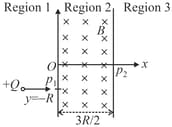plane shown in the figure contains uniform magnetic field for . A particle having charge and mass travels along -axis. At origin of co-ordinate system velocity of particle is and it enters the region containing magnetic field. Assume that particle is subjected to a frictional force i.e. frictional force is proportional to velocity. Assume frictional force is large enough so that particle remains inside region at all times. The only forces acting on particle are frictional force and magnetic force. Particle will remain in plane as no magnetic force will act along axis. So . The cordinate where particle comes to rest is given by . Find .
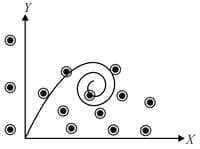

Important Questions on Magnetic Fields due to Electric Current
Two magnetic dipoles and are placed at a separation , with their axes perpendicular to each other. The dipole moment of is twice that of . A particle of charge is passing through their mid-point , at angle with the horizontal line, as shown in figure. What would be the magnitude of force on the particle at that instant? ( is much larger than the dimension of the dipole)
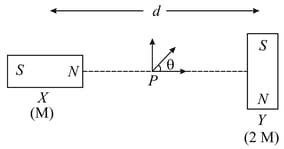
Consider a negatively charged particle moving with a velocity in a magnetic field applied perpendicular to the plane of the paper (into the paper). The particle follows the path or or or (shown in the figure)
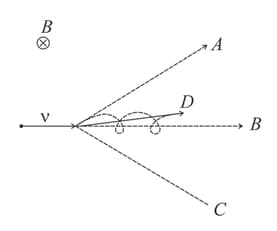
An electron enters a magnetic field of with a velocity of The acceleration produced is
( of electron )
A particle with charge moves with a velocity in a direction perpendicular to the directions of uniform electric and magnetic fields, and respectively, which are mutually perpendicular to each other. Which one of the following gives the condition for which the particle moves undeflected in its original trajectory?
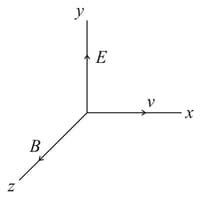
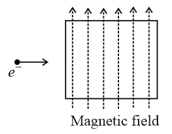
During its motion inside the chamber
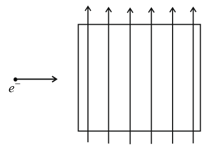
An electric field of appropriate magnitude is also applied so that the electron travels un-deviated without any change in its speed through the chamber. We are ignoring gravity. Then, the direction of the electric field is,
An electric current enters and leaves a uniform circular wire of radius through diametrically opposite points. A particle carrying a charge moves along the axis of the circular wire with speed . What is the magnetic force experienced by the particle when it passes through the centre of the circle?
